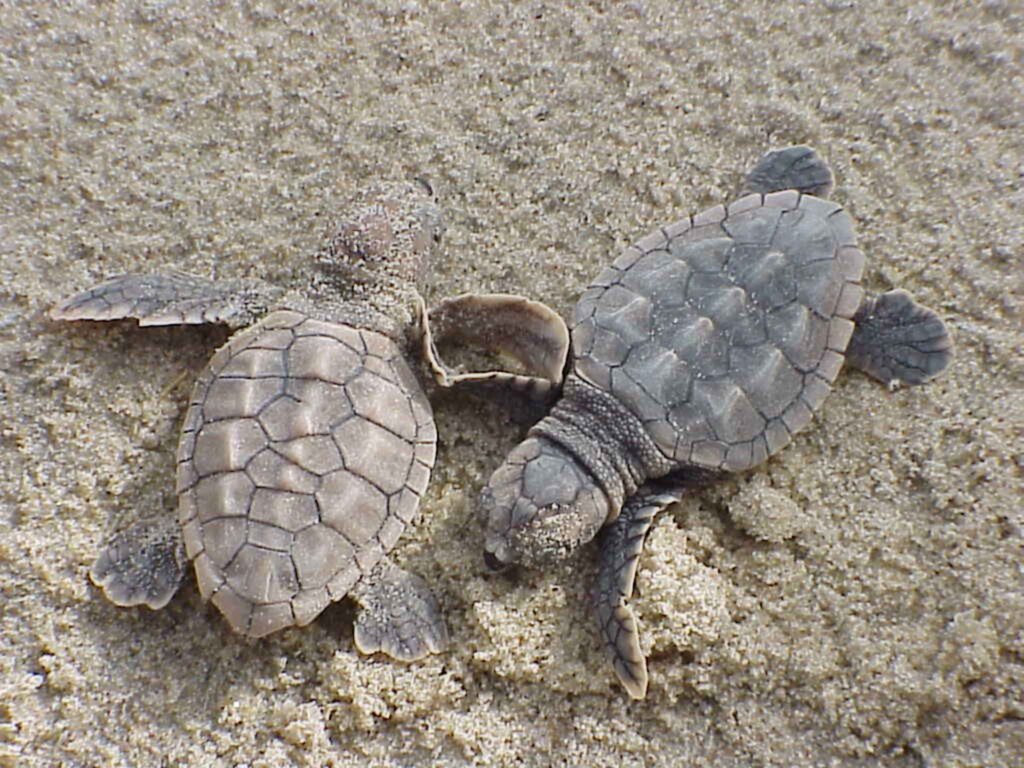By Bill Wellock, Florida State University News
New research led by a Florida State University professor shows that potential adaptive responses by sea turtles, such as shifting the timing of when they nest, may not be enough to counteract the projected impacts from climate change on hatchling production.
Warmer temperatures cause lower hatchling success and a greater percentage of female turtles, both of which can disrupt the viability of a species. Sand temperatures at sea turtle nesting sites globally are projected to increase by about 0.6 degrees Celsius to about 4.2 degrees Celsius by 2100.

To examine how sea turtles might cope with higher temperatures, researchers with the study, led by Department of Earth, Ocean and Atmospheric Science Associate Professor Mariana Fuentes, gathered data from 24 nesting sites across the world used by four species of sea turtles: green, loggerhead, hawksbill and olive ridley turtles.
They used their data to predict how turtles might shift the timing of nesting and what hatchling success they might expect. The research was published in Global Change Biology.
“We have already observed that sea turtles are nesting earlier to align with optimal environmental conditions,” Fuentes said. “Sea turtles in the past have adapted to climate changes by changing the timing of their nesting or the distribution of their nesting sites, but we have found that even if they do change the timing of their nesting, that’s not going to be sufficient to maintain the temperatures of current nesting grounds.”
To maintain incubation temperatures in the sites the researchers examined, sea turtles will have to nest between 20 to 191 days earlier, or 54 to 180 days later. But in about half the sites, median incubation temperature will always be warmer than the 75th percentile of current ranges.
Turtles nesting further from the equator will be more able to counteract the impacts of warming. Those that nest closer to the equator will be most affected.

Because temperature is so important to sea turtle egg incubation, scientists have long studied them for insight into how wildlife might adapt as temperatures rise. Different sea turtle species have existed for millions of years and adapted to previous changes in the Earths’ climate, but the rate of change is much faster now. Researchers did not examine population viability in this study, but if fewer hatchlings are being produced, in 100 years there will be some locations that have lower hatchling productivity.
“Skeptics may say that sea turtles have been around for a long time and have adapted, but we’re showing that the adaptations that they might undertake are not going to be sufficient to counteract projected impacts,” Fuentes said.
The study involved 52 collaborators from universities in the U.S., Mexico, Qatar, France, Australia, Turkey, Cyprus, Brazil, India, Malaysia, Guinea-Bissau, Indonesia, South Africa, Spain, French Polynesia, El Salvador and the United Kingdom. The research was supported by the National Science Foundation and by several other institutions that funded the field component of the work.
This piece was originally published at https://news.fsu.edu/news/science-technology/2023/10/31/fsu-led-research-shows-shifting-nesting-timing-not-enough-to-prevent-fewer-sea-turtle-hatchlings/
Sign up for The Invading Sea newsletter by visiting here. If you are interested in submitting an opinion piece to The Invading Sea, email Editor Nathan Crabbe at ncrabbe@fau.edu.



